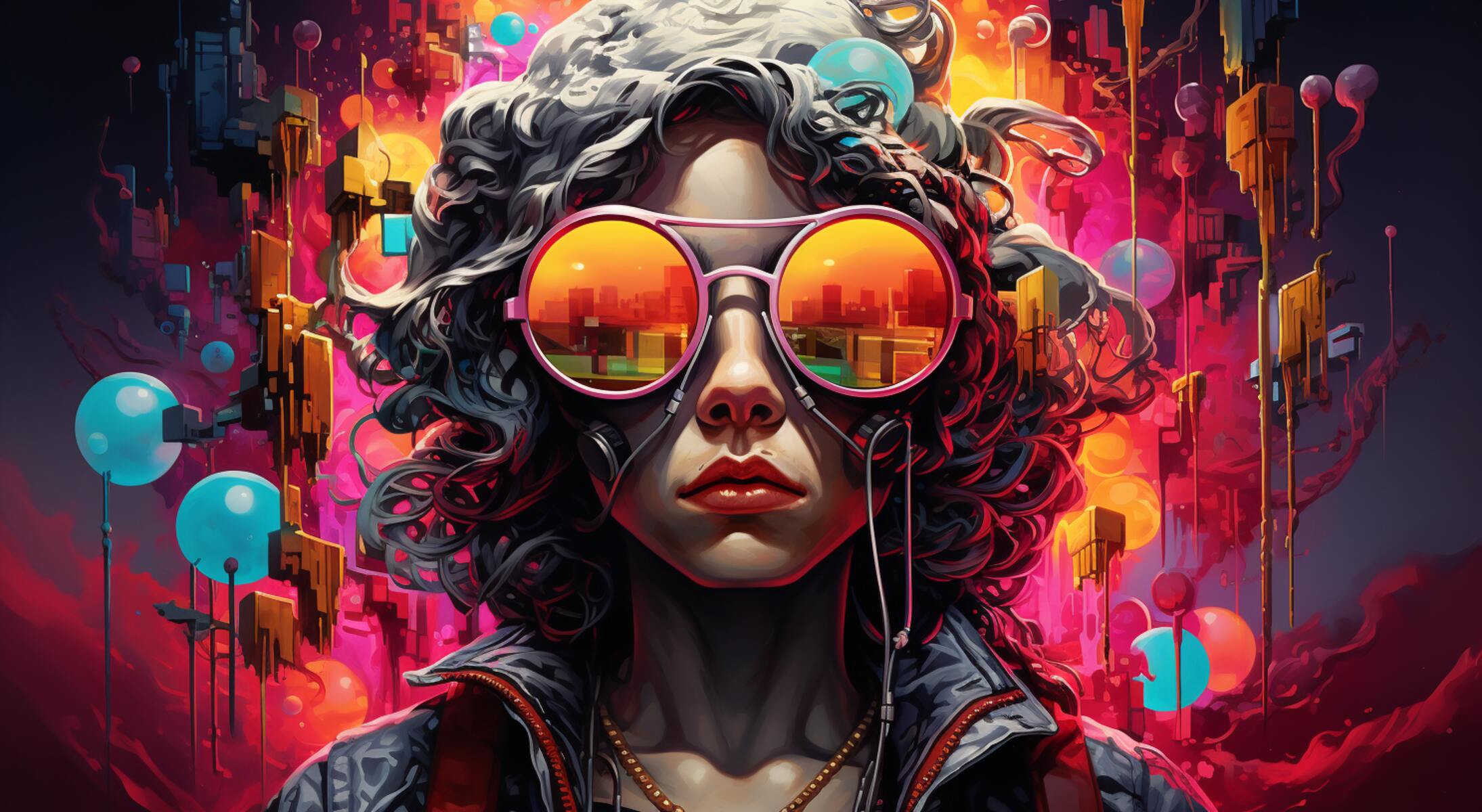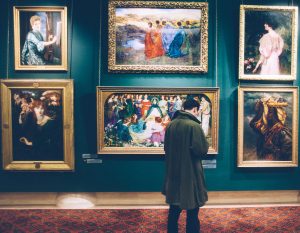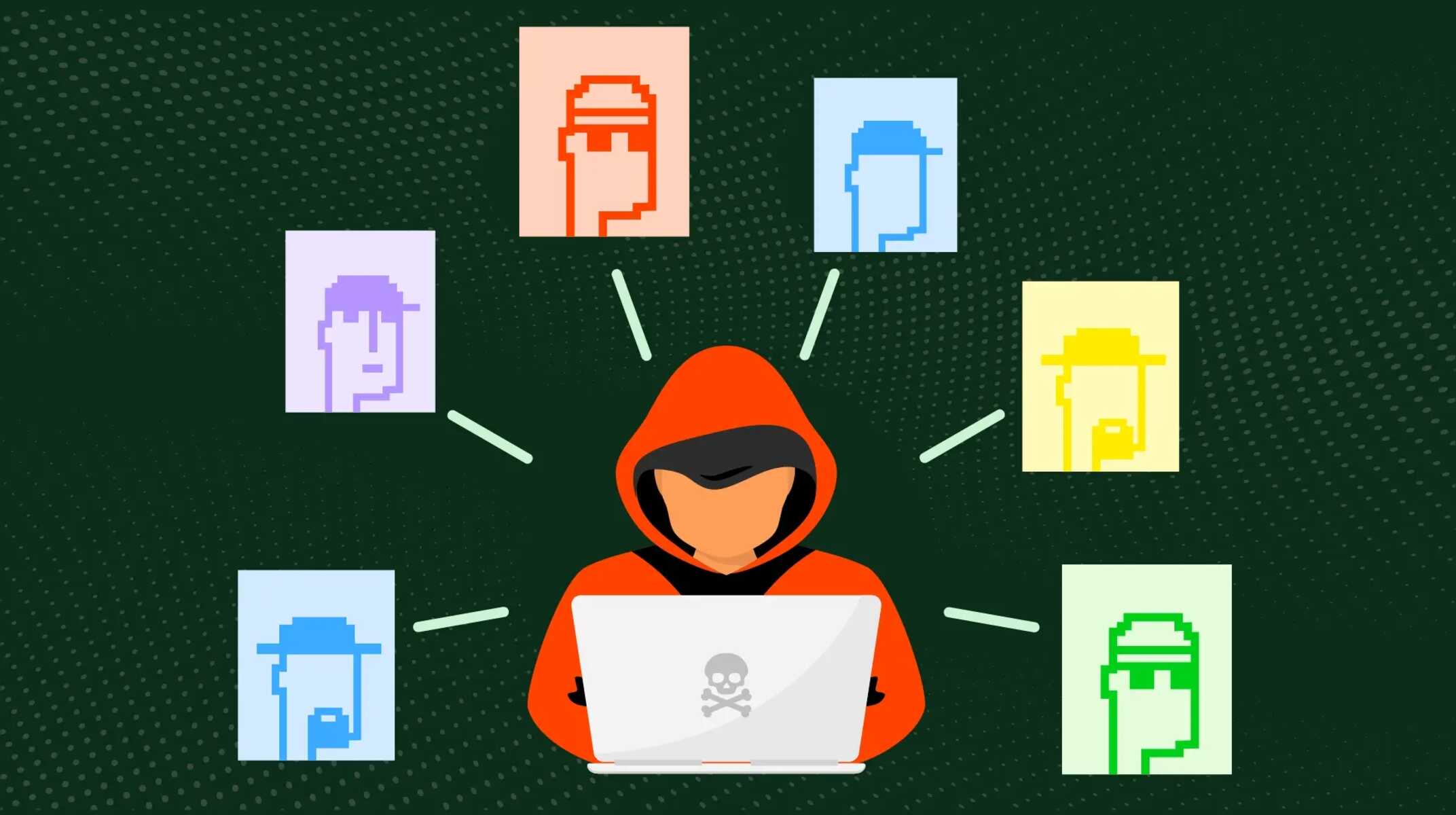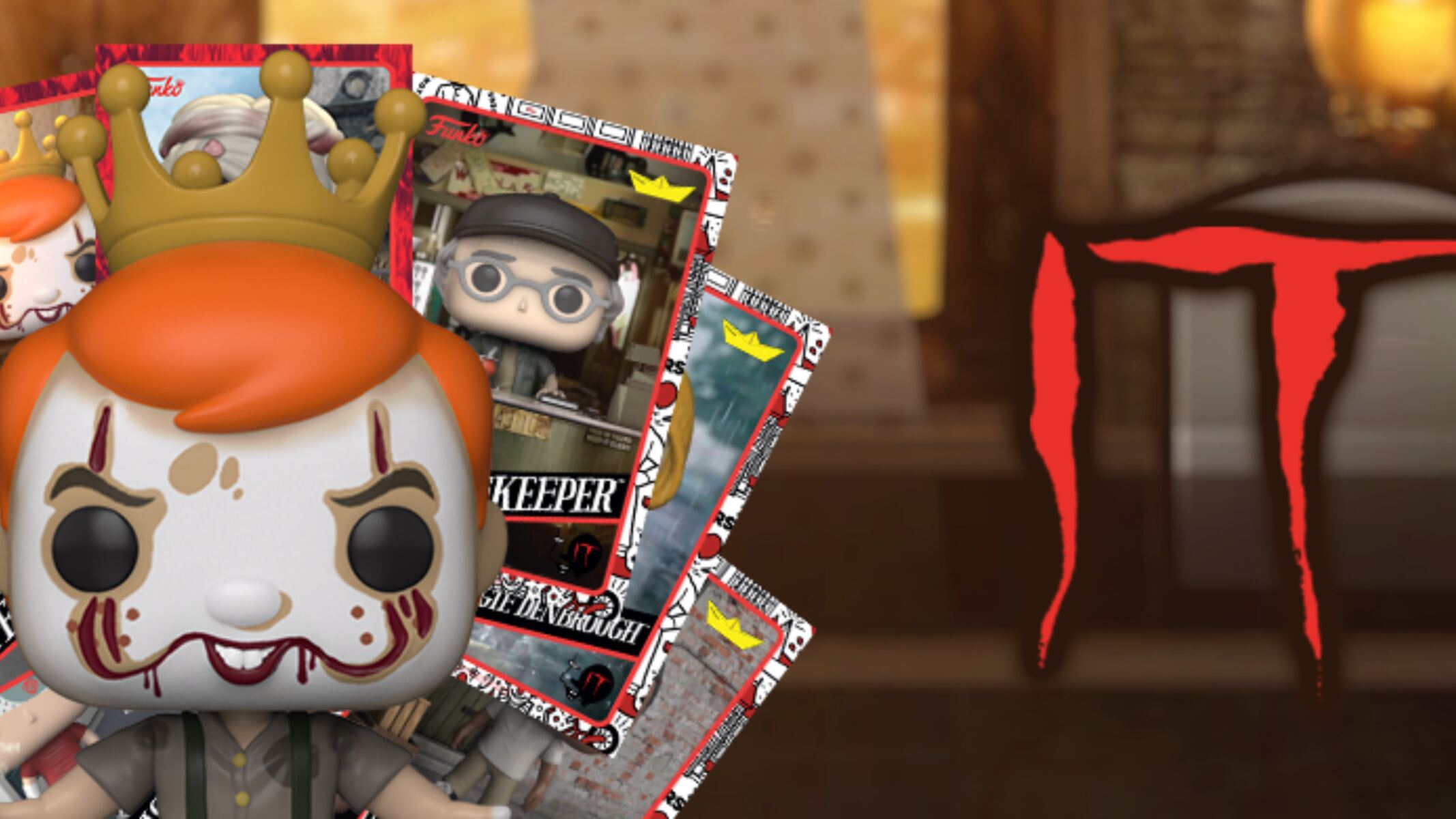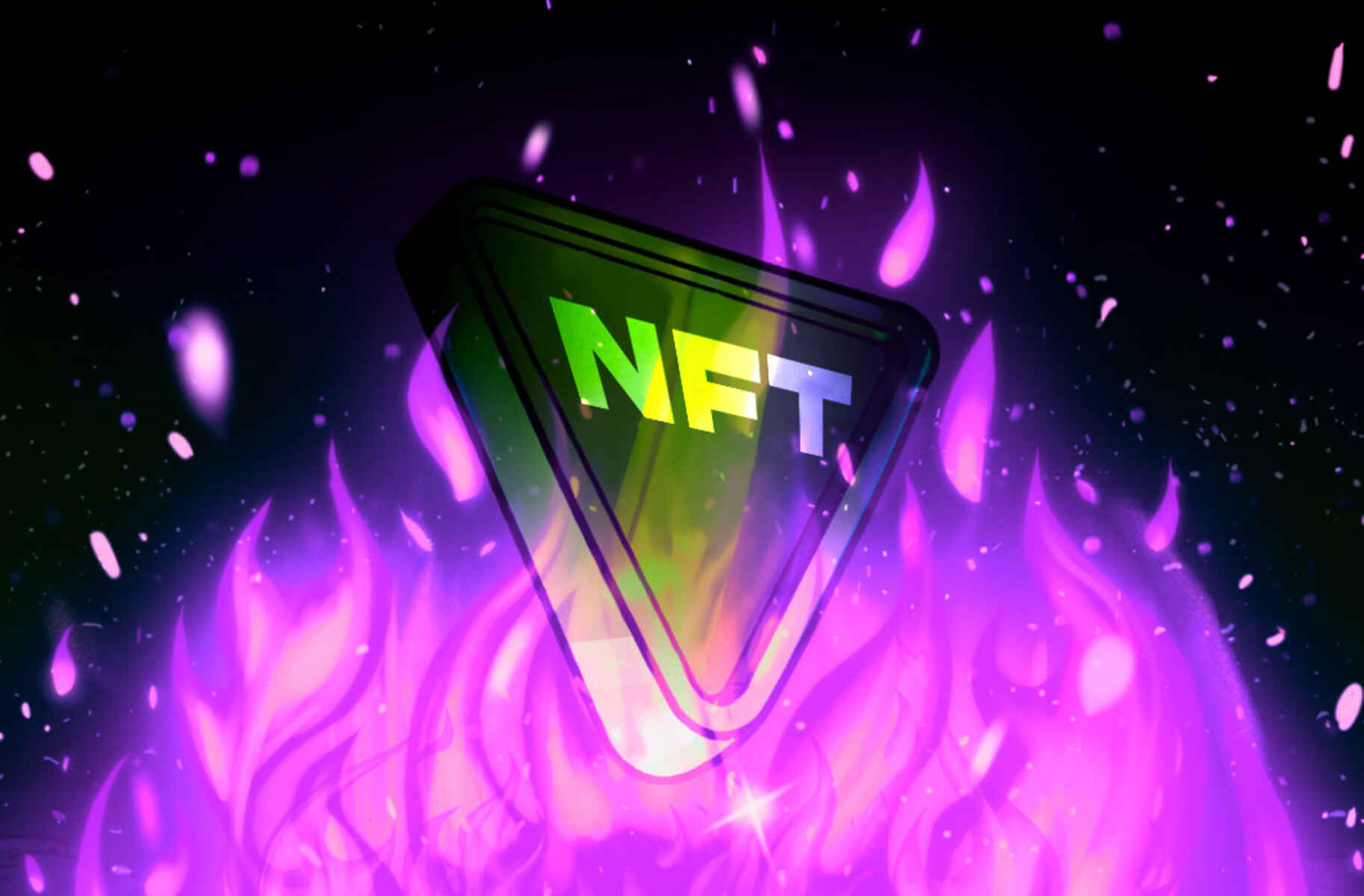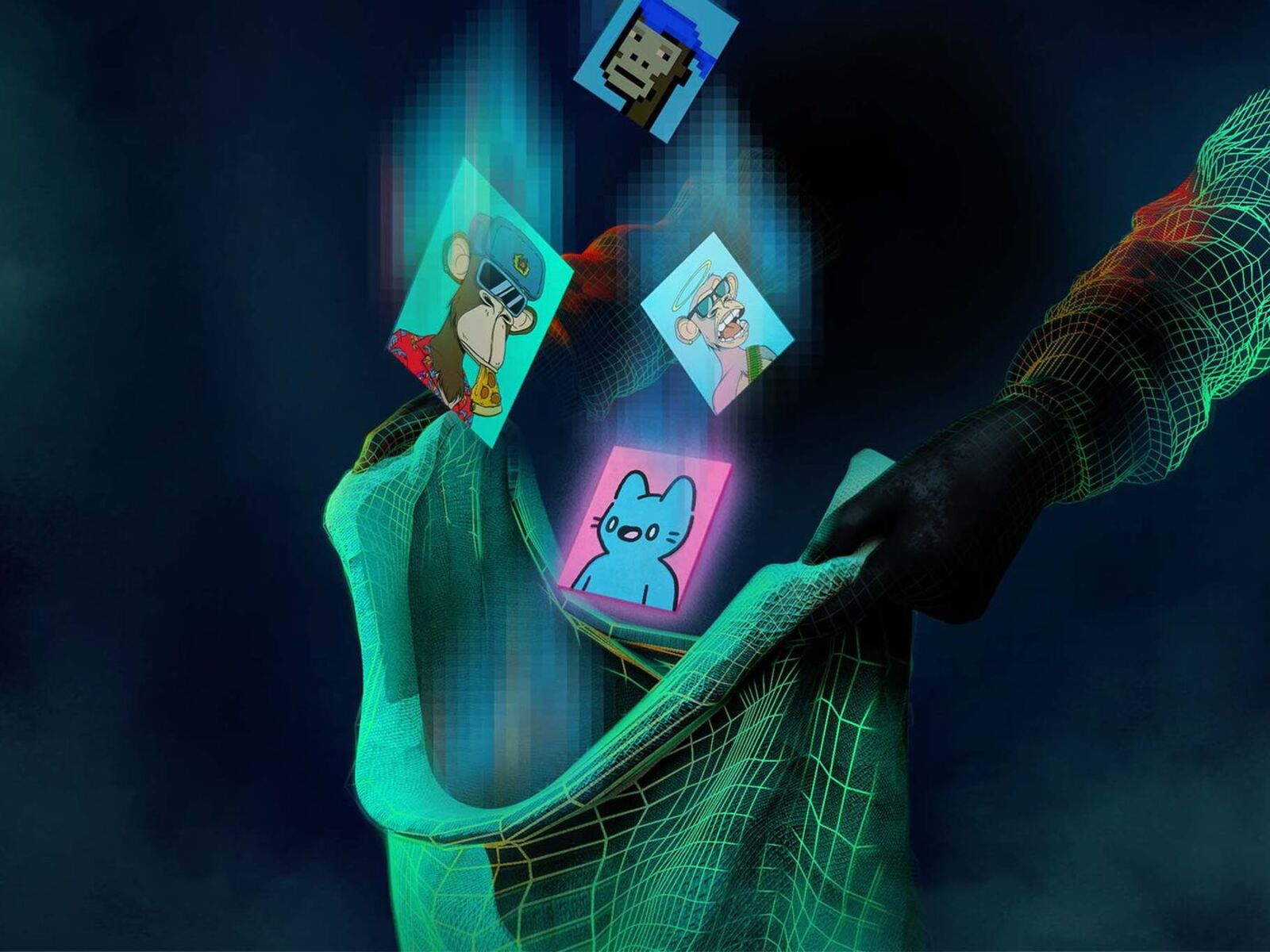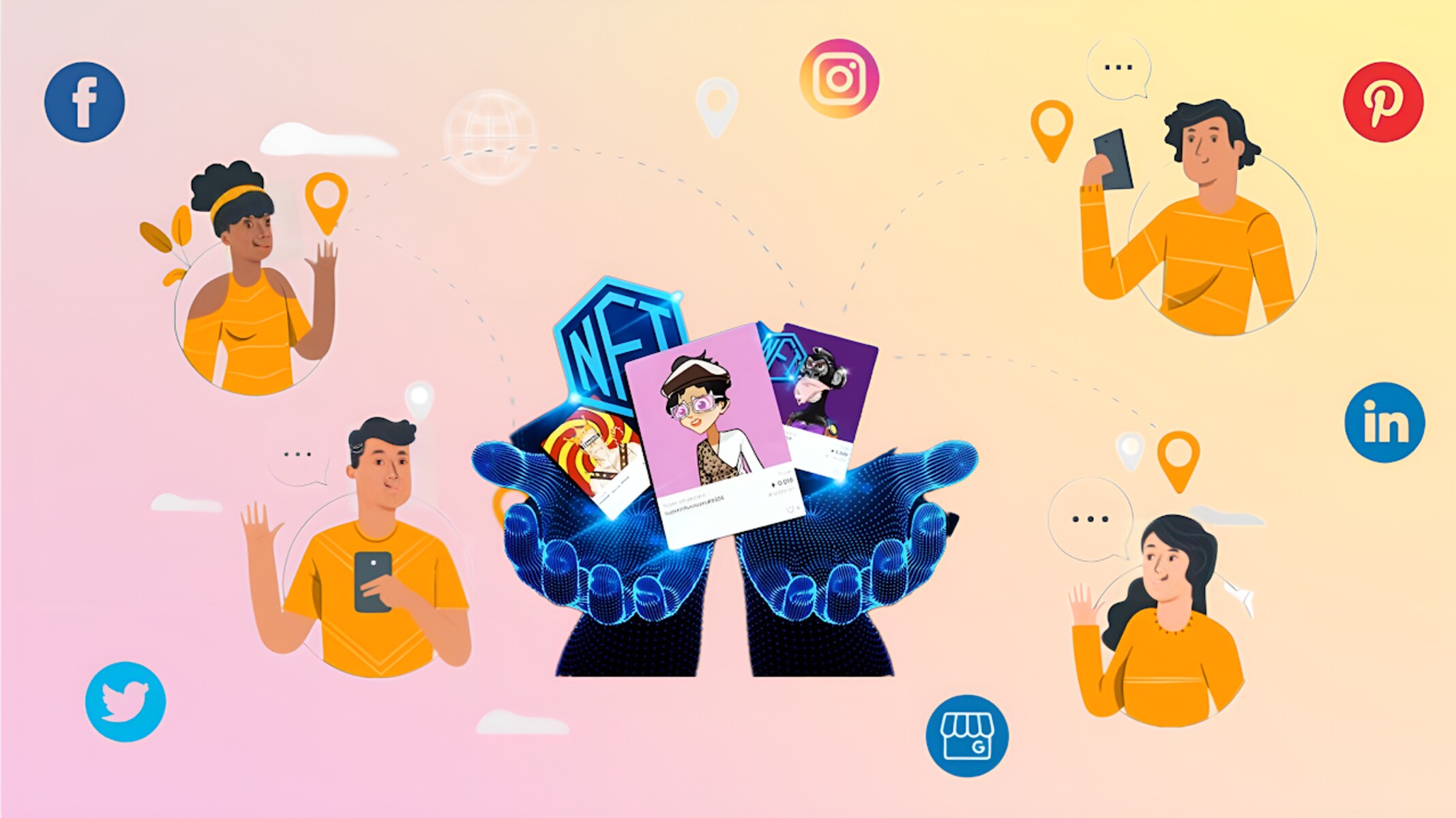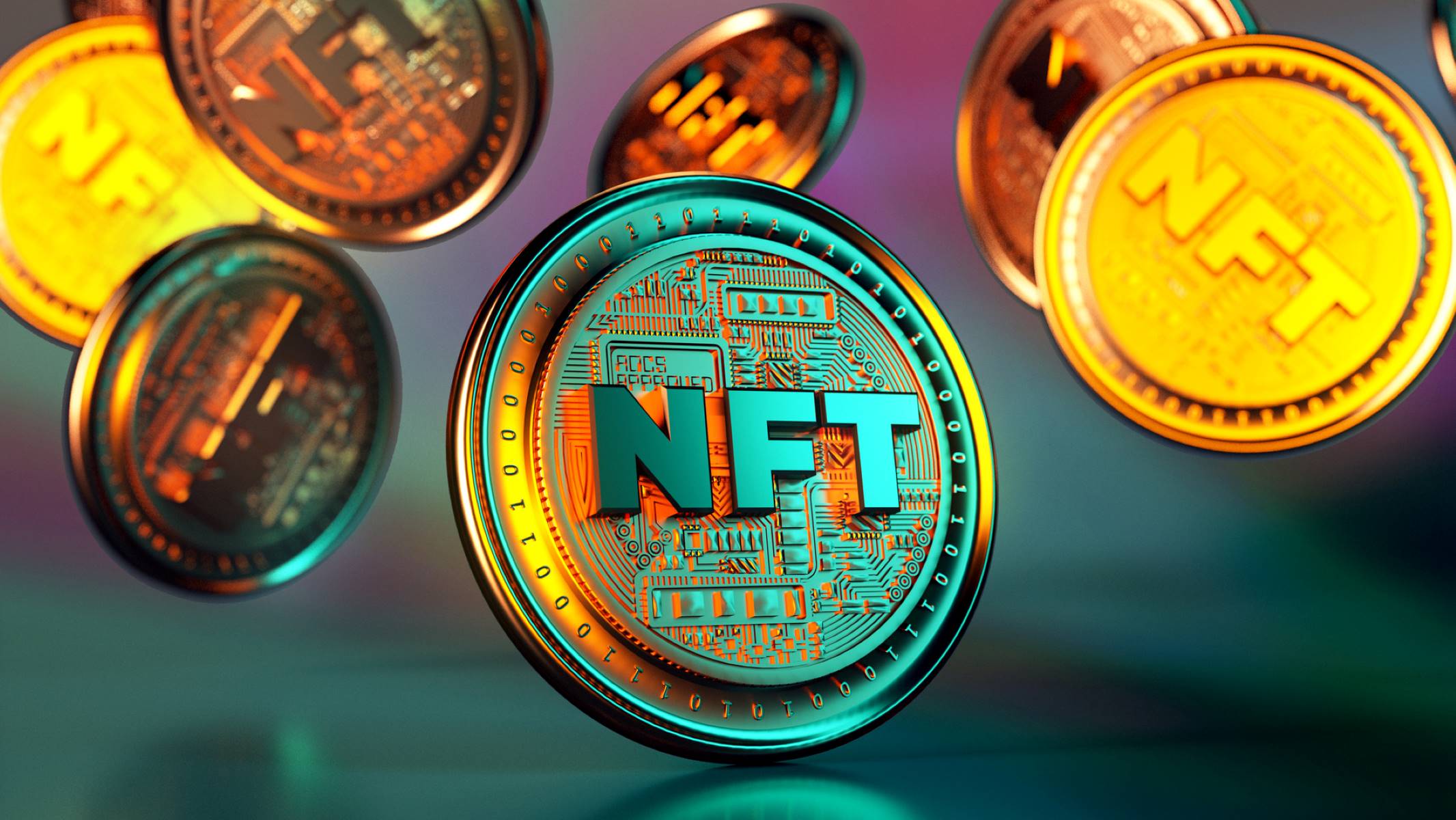Introduction
Welcome to the digital revolution, where Non-Fungible Tokens (NFTs) have taken center stage. Over the past few years, NFTs have gained immense popularity, creating new possibilities in the world of digital art, collectibles, and even virtual real estate. But what exactly is an NFT, and how does it work?
An NFT is a type of digital asset that represents ownership or proof of authenticity of a unique item or piece of content. Unlike cryptocurrencies such as Bitcoin or Ethereum, which are fungible and can be exchanged on a one-to-one basis, NFTs are indivisible, unique, and can’t be exchanged on a like-for-like basis. This uniqueness is what gives NFTs their value and appeal.
When you own an NFT, you own a verifiable digital certificate of ownership that proves you have the original or a limited edition of a particular asset. This asset can range from digital art, music, videos, virtual real estate, or even tweets. But how does the ownership of an NFT differ from traditional ownership, and what happens when you try to capture a screenshot of an NFT?
In this article, we will explore the fascinating world of NFTs and delve into whether or not you can screenshot an NFT. We will also discuss the implications and consequences of screenshotting an NFT, as well as the challenges faced in protecting NFTs from unauthorized screenshotting.
What is an NFT?
An NFT, short for Non-Fungible Token, is a type of digital token that represents ownership or proof of authenticity of a unique item or piece of content. Each NFT is one-of-a-kind and can’t be replicated or exchanged on a like-for-like basis, making it distinguishable from other tokens or assets. It utilizes blockchain technology to provide a secure and transparent record of ownership.
Unlike cryptocurrencies such as Bitcoin or Ethereum, which are fungible and can be exchanged on a one-to-one basis, NFTs are indivisible and have unique properties that make them irreplaceable. They are typically built on blockchain platforms like Ethereum, utilizing smart contracts to govern ownership rights, transaction history, and provenance.
What makes NFTs particularly intriguing is their ability to represent a wide range of digital assets. These assets can include digital art, music, videos, virtual real estate, virtual goods in video games, collectibles, and even tweets. NFTs have revolutionized the way that digital content is valued and traded, providing creators with new opportunities to monetize their work and collectors with the ability to own and trade digital assets like never before.
Ownership of an NFT is typically accompanied by a digital certificate of authenticity that verifies the uniqueness and ownership rights of the asset. This certificate contains information such as the creator of the asset, its title, description, and any relevant metadata. It serves as a digital representation of the asset and can be transferred or sold just like any physical property, albeit in digital form.
The value of an NFT is determined by various factors, including the perceived value of the underlying asset, the reputation and popularity of the creator, scarcity, demand, and historical sales data. NFT marketplaces have emerged as platforms where creators can mint and sell their NFTs directly to buyers, often earning royalties from subsequent sales.
How does an NFT work?
At the core of an NFT’s functionality is the underlying blockchain technology. Most NFTs are built on blockchain platforms such as Ethereum, which utilize smart contracts to establish and enforce ownership rules and transactions.
When an artist or creator mints an NFT, they assign certain attributes and metadata to the token, including details about the asset itself, such as title, description, and image or media file. This information is stored on the blockchain and cannot be altered, ensuring the authenticity and immutability of the asset.
Once created, the NFT can be bought, sold, or traded on various NFT marketplaces. These platforms act as intermediaries, facilitating the transactions between buyers and sellers. When a buyer purchases an NFT, the ownership record is updated on the blockchain, reflecting the new owner’s wallet address.
Every NFT holds a unique identifier, known as a token ID, which distinguishes it from other tokens within the same collection or series. This token ID ensures that the NFT is easily verifiable and traceable.
Additionally, NFTs can have programmable features, thanks to the use of smart contracts. These contracts can enable various functionalities, including royalty payments to the original creator each time the NFT is resold. This feature has revolutionized the art world, allowing artists to earn ongoing income from their creations even after the initial sale.
Furthermore, interoperability is another key aspect of NFTs. It means that NFTs can be transferred or used across different platforms and applications that support the same blockchain standard. This portability enhances their liquidity and utility, making it possible for NFTs to be showcased in virtual worlds, integrated into gaming experiences, or utilized in decentralized finance (DeFi) protocols.
As each NFT transaction is recorded on the blockchain, the history and provenance of the asset can be easily verified. This transparency provides confidence to potential buyers and collectors, ensuring that they are investing in an authentic and genuine piece of digital content.
The value of an NFT
The value of an NFT is a topic that has sparked immense interest and debate. While some may question why anyone would pay a significant amount of money for a digital asset that can be easily replicated, the concept of owning a digital piece of history or exclusive content has given rise to a whole new market.
One of the key factors contributing to the value of an NFT is its scarcity. Unlike digital content that can be accessed and shared by anyone, owning an NFT provides a sense of exclusivity. The limited supply of certain NFTs, whether it be a unique piece of artwork or a limited edition collectible, drives up their desirability and, consequently, their value.
The value of an NFT is also influenced by the reputation and popularity of the creator. Just like in the traditional art world, NFTs created by established artists or celebrities tend to command higher prices. Collectors are drawn to owning a piece of work from a renowned artist, and this demand significantly impacts the value of the NFT.
Perceived value is another crucial aspect when it comes to NFTs. Artistic merit, emotional connection, cultural significance, or historical relevance can all contribute to the perceived value of an NFT. For example, an NFT representing a famous moment in sports history or a significant event in popular culture may hold significant value due to its unique nature and the emotions it evokes.
The concept of provenance, or the documented history of an NFT’s ownership and authenticity, also adds value. Knowing that an NFT comes directly from the creator’s wallet and has a clear chain of custody instills confidence in buyers. Collectors are more willing to invest in NFTs with verified provenance, as it adds a layer of trust and assurance to their purchase.
Furthermore, utility and functionality play a role in determining the value of an NFT. Some NFTs have real-world utility, such as granting access to exclusive events, virtual experiences, or even physical assets. The added utility enhances the value proposition of the NFT, making it more attractive to potential buyers.
Last but not least, the speculative nature of the NFT market has contributed to the fluctuation in prices. Some buyers see NFTs as investment opportunities, hoping that the value of their purchased NFTs will increase over time. This speculative demand can drive up prices, creating a vibrant marketplace for buying and selling NFTs.
It’s important to note that the value of NFTs can be subjective and can vary greatly between different individuals and communities. What one person may consider valuable, another may not. The beauty of NFTs lies in their ability to provide a platform for creators and collectors to assign and discover value in the digital realm.
Can you screenshot an NFT?
One common question that arises in the world of NFTs is whether or not you can simply take a screenshot of an NFT and have the same value as owning the original token. The short answer to this question is yes, you can technically take a screenshot of an NFT, but it does not provide you with the same ownership rights or value as owning the actual token.
When you take a screenshot of an NFT, you are essentially capturing a digital image of the artwork or content associated with the token. However, what you are capturing is just a digital representation and not the actual NFT itself. While the image may look the same, it lacks the verifiable ownership and proof of authenticity that comes with owning the NFT.
The value of an NFT lies in the blockchain technology that supports it. The blockchain acts as a decentralized ledger that records every transaction and verifies the ownership of the NFT. When you own an NFT, you have a unique token ID and a transferable digital certificate of ownership that can be traced back to the original creator.
On the other hand, a screenshot is simply a static image that can be easily duplicated and shared without any proof of ownership or authenticity. It does not carry the same level of trust and verification that an NFT provides. As a result, the screenshot does not hold the same value in terms of ownership or investment potential.
It’s worth noting that the ability to take a screenshot of an NFT does not diminish the value of the original token for those who are interested in owning and collecting unique digital assets. NFT collectors appreciate the exclusivity, authenticity, and unique features that come with owning the original token. They understand that owning an NFT goes beyond possessing a simple image; it represents a connection to the creator and a piece of digital history.
However, the ease of screenshotting does raise concerns about the potential for unauthorized duplication and distribution of NFTs. This can lead to issues of copyright infringement and unauthorized use of digital assets. Protecting NFTs from unauthorized screenshotting is an ongoing challenge that NFT creators and platforms need to address to ensure the integrity and value of the tokens.
In the next sections, we will explore what happens when you screenshot an NFT and the differences between a screenshot and actual ownership of an NFT.
What happens when you screenshot an NFT?
When you take a screenshot of an NFT, you are essentially capturing a digital image of the artwork or content associated with the token. From a visual standpoint, the screenshot may look identical to the original NFT, but it lacks the underlying blockchain technology and the ownership rights associated with the actual token.
The act of screenshotting an NFT does not affect the original NFT itself. The blockchain record remains unchanged, and the ownership of the NFT remains with the original owner. The screenshot merely creates a separate digital image that is detached from the blockchain and holds no inherent value or ownership rights.
While the screenshot can be shared, downloaded, and viewed by others, it does not replicate the unique properties and verifiable ownership that the original NFT offers. It’s important to understand that the value of an NFT lies in its scarcity, authenticity, and the trust provided by the blockchain. None of these aspects can be captured in a simple screenshot.
Additionally, taking a screenshot of an NFT does not grant you any rights or permissions to use the content in a commercial or unauthorized manner. The original creator still holds the copyright and intellectual property rights to the artwork or content associated with the NFT. Using or sharing the screenshot without proper authorization may infringe upon these rights and could result in legal consequences.
It’s also worth considering the ethical implications of screenshotting NFTs. The act of screenshotting can be seen as devaluing the original NFT and undermining the ecosystem that supports it. By freely replicating and distributing screenshot images, the exclusivity and scarcity of the NFT are compromised, potentially affecting the perceived value of the token.
It’s important for collectors, investors, and enthusiasts to understand the distinction between owning the original NFT and having a mere screenshot. While a screenshot may provide a visual representation of the NFT, it lacks the underlying technology, security, and proof of ownership that come with owning the token.
In the next section, we will explore the differences between a screenshot and actual ownership of an NFT, shedding light on why owning the original token holds unique value in the digital realm.
Differences between a screenshot and actual ownership
While a screenshot of an NFT may visually resemble the original token, there are significant differences between owning the actual NFT and having a screenshot. These differences impact the ownership rights, value, and overall experience of the digital asset.
1. Ownership and authenticity: When you own an NFT, you have verifiable proof of ownership and authenticity. The ownership record is stored on the blockchain, ensuring that you are the legitimate owner of the token. In contrast, a screenshot is merely a copy of the visual representation, lacking any proof or traceability of ownership.
2. Transferability: NFTs are designed to be easily transferable between wallets and collectors. The ownership can be transferred on the blockchain, creating a transparent and secure record of the transaction. Screenshot images, however, cannot be transferred in the same way, as they do not exist on the blockchain and are not recognized as unique tokens.
3. Value and scarcity: The value of an NFT is often driven by its scarcity and demand. Authentic NFTs have limited editions, unique attributes, or even one-of-a-kind creations, making them highly sought after. Screenshot images lack the limited supply and unique properties that contribute to the value of an original NFT.
4. Royalties and resale rights: NFT creators often include royalties in their smart contracts, earning a percentage of the revenue each time the NFT is resold. This functionality is specific to the NFT itself and cannot be replicated with a screenshot. When you own the original NFT, you have the ability to benefit from future sales of the token.
5. Digital provenance: NFTs provide a transparent and immutable record of ownership and transaction history. The blockchain serves as a decentralized ledger, documenting the entire lifecycle of the NFT. Screenshot images lack this digital provenance and can easily be reproduced or manipulated without a secure record of the asset’s history.
6. Community and engagement: Owning the original NFT often comes with access to exclusive communities, events, or experiences. Some NFT owners gain special privileges or perks tied to their ownership, such as participation in virtual meetups or receiving additional content. Screenshot images do not grant access to these unique opportunities and interactions.
It’s essential to recognize that the true value of an NFT goes beyond the visual representation. Owning the original token provides a connection to the creator, a sense of exclusivity, and participation in a growing digital community. Screenshot images, while visually similar, lack these immersive experiences and the underlying technology that makes NFTs valuable.
Protecting NFTs from unauthorized screenshotting and educating the community about the distinctions between screenshots and ownership is crucial to maintaining the integrity and value of the digital assets.
Challenges in the screenshotting of NFTs
The screenshotting of NFTs presents several challenges that need to be addressed by NFT creators, platforms, and the wider community. These challenges impact the security, value, and integrity of the NFT ecosystem.
1. Copyright infringement: When users take screenshots of NFTs and share them without proper authorization or attribution, it can lead to copyright infringement. Creators invest time and effort into their work, and unauthorized screenshotting undermines their ability to control and monetize their creations. Establishing clear guidelines for the use and reproduction of NFT content is necessary to protect the rights of the original creators.
2. Loss of exclusivity and scarcity: The ease of taking screenshots and sharing them freely on the internet can compromise the exclusivity and scarcity of NFTs. The ability to replicate and distribute screenshot images diminishes the perception of rarity and uniqueness associated with owning the original token. This can impact the overall value and desirability of the NFTs in the market.
3. Distrust in the NFT market: The prevalence of screenshot images circulating on the internet without proper attribution or verification can erode trust in the NFT market. If potential buyers are unsure whether the NFT they are considering purchasing is the original token or a simple screenshot, they may hesitate to invest in the asset. Ensuring transparency, secure ownership verification, and educating the community about the risks of screenshotting are paramount in building and maintaining trust.
4. Misrepresentation and fraud: Screenshot images can be manipulated, edited, or falsely presented as authentic NFTs. This creates the potential for fraud or misrepresentation, where unsuspecting buyers may be deceived into purchasing a copy without realizing they do not hold ownership rights to the original token. Developing mechanisms to distinguish between real NFTs and screenshots is essential in protecting buyers from fraudulent activities.
5. Attribution and recognition: Screenshotting can complicate the process of attributing and recognizing the original creators of the NFTs. When images circulate without proper attribution, it becomes challenging for creators to gain visibility and credit for their work. Implementing standardized practices for crediting NFT creators, even in the case of screenshot replication, can help maintain integrity and acknowledgment in the digital art community.
Addressing these challenges requires a collaborative effort from NFT creators, platforms, collectors, and the wider community. Utilizing robust technological solutions, such as embedding metadata or digital watermarks into NFTs, can help verify authenticity and deter unauthorized replication. Educating users about the importance of respecting copyright and providing clear guidelines for the use of NFT content can also foster a more responsible and trustworthy NFT ecosystem.
By tackling the challenges associated with screenshotting NFTs, the digital art and collectibles industry can continue to flourish, ensuring fair compensation for creators and providing collectors with a secure and authentic ownership experience.
Protecting NFTs from unauthorized screenshotting
The protection of NFTs from unauthorized screenshotting is critical in preserving their value, ensuring the integrity of the digital art market, and safeguarding the rights of creators. While it may be challenging to completely prevent screenshotting, there are measures that can be taken to minimize its impact and protect the interests of NFT owners and creators.
1. Digital watermarks and metadata: Embedding digital watermarks or metadata into NFTs can help deter unauthorized screenshotting. These unique identifiers can be added to the artwork or content associated with the NFT, making it easier to detect and trace original creations. Watermarks can discourage those looking to replicate NFTs for fraudulent purposes.
2. Terms of use and licensing: Establishing clear terms of use and licensing guidelines for NFTs can protect against unauthorized replication and ensure proper attribution. By expressly outlining how the NFT content can be used, shared, and reproduced, creators can assert their rights and discourage unauthorized screenshotting. Platforms can also enforce these terms by implementing mechanisms to track and monitor usage.
3. Enhanced security measures: Strengthening security measures on NFT platforms and marketplaces can help safeguard against unauthorized access, screenshotting, and distribution. Implementing multi-factor authentication, encryption, and other security protocols can provide an additional layer of protection for NFT owners and their assets.
4. Education and awareness: Educating users about the importance of respecting copyright and the implications of unauthorized screenshotting is crucial. Heightened awareness can encourage responsible behavior among collectors, discouraging them from engaging in screenshotting without proper authorization. Creators can contribute by spreading awareness about the value of owning an original NFT and the impact of screenshotting on their livelihood.
5. Digital rights management solutions: Developing comprehensive digital rights management (DRM) solutions specifically tailored for NFTs can help protect against unauthorized replication and distribution. These solutions can provide tools for creators to enforce their rights, monitor and track NFT usage, and establish secure channels for sharing and displaying NFT content.
6. Blockchain technology advancements: Continued advancements in blockchain technology can enhance the protection of NFTs from unauthorized screenshotting. Leveraging technologies such as non-fungible token standards, smart contracts, and decentralized storage can improve the verifiability, traceability, and the overall security of NFT ownership. Efforts are being made to explore blockchain-based watermarking and securing content on-chain to provide greater protection against unauthorized replication.
By implementing a combination of technological solutions, education, and enforcement measures, the NFT community can work together to protect the value and authenticity of NFTs. Collaboration between creators, platforms, collectors, and industry stakeholders is essential to create a sustainable and secure environment for the creation and trading of NFTs.
Conclusion
NFTs have introduced a groundbreaking paradigm shift in the digital world, enabling ownership, provenance, and value for unique digital assets. While screenshots of NFTs may resemble the visual representation, the true value lies in owning the original token. Screenshotting an NFT does not provide the same verifiable ownership, authenticity, and investment potential that come with owning the actual token.
Throughout this article, we explored the concept of NFTs, their functionality, and the challenges associated with screenshotting. NFTs represent a new way for creators to monetize their digital creations and for collectors to own and trade unique digital assets. The value of an NFT is driven by factors such as scarcity, reputation of the creator, provenance, and utility.
We discussed the differences between a screenshot and actual ownership of an NFT, highlighting the importance of blockchain technology, ownership rights, and the unique features offered by NFTs. Screenshot images lack the underlying technology, provenance, and trustworthiness that make NFTs valuable assets.
Furthermore, we explored the challenges in the screenshotting of NFTs, including copyright infringement, loss of exclusivity, and misrepresentation. Protecting NFTs from unauthorized screenshotting requires a combination of technological solutions, education, and enforceable guidelines. Digital watermarks, enhanced security measures, DRM solutions, and copyright awareness all play crucial roles in preserving the integrity and value of NFTs.
As the NFT market continues to evolve, it is vital for NFT creators, platforms, collectors, and the wider community to collaborate and address the challenges associated with screenshotting. By doing so, we can foster a secure and thriving ecosystem that rewards creators, provides collectors with genuine ownership experiences, and ensures the longevity of the NFT revolution.







